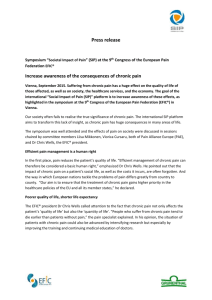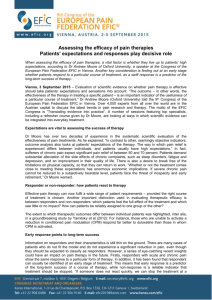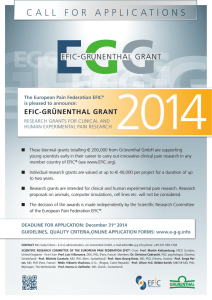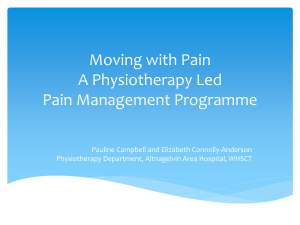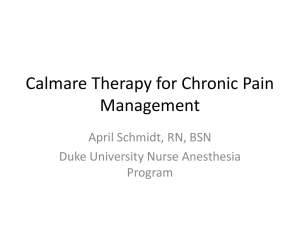The battle against chronic pain must be given higher priority
advertisement
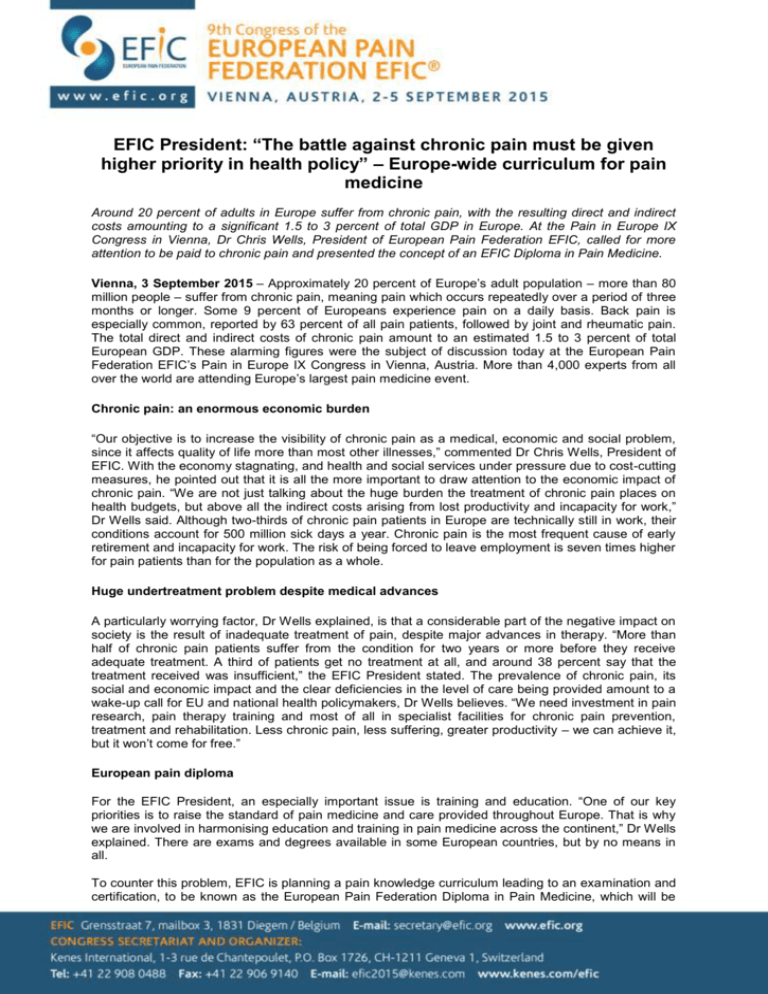
EFIC President: “The battle against chronic pain must be given higher priority in health policy” – Europe-wide curriculum for pain medicine Around 20 percent of adults in Europe suffer from chronic pain, with the resulting direct and indirect costs amounting to a significant 1.5 to 3 percent of total GDP in Europe. At the Pain in Europe IX Congress in Vienna, Dr Chris Wells, President of European Pain Federation EFIC, called for more attention to be paid to chronic pain and presented the concept of an EFIC Diploma in Pain Medicine. Vienna, 3 September 2015 – Approximately 20 percent of Europe’s adult population – more than 80 million people – suffer from chronic pain, meaning pain which occurs repeatedly over a period of three months or longer. Some 9 percent of Europeans experience pain on a daily basis. Back pain is especially common, reported by 63 percent of all pain patients, followed by joint and rheumatic pain. The total direct and indirect costs of chronic pain amount to an estimated 1.5 to 3 percent of total European GDP. These alarming figures were the subject of discussion today at the European Pain Federation EFIC’s Pain in Europe IX Congress in Vienna, Austria. More than 4,000 experts from all over the world are attending Europe’s largest pain medicine event. Chronic pain: an enormous economic burden “Our objective is to increase the visibility of chronic pain as a medical, economic and social problem, since it affects quality of life more than most other illnesses,” commented Dr Chris Wells, President of EFIC. With the economy stagnating, and health and social services under pressure due to cost-cutting measures, he pointed out that it is all the more important to draw attention to the economic impact of chronic pain. “We are not just talking about the huge burden the treatment of chronic pain places on health budgets, but above all the indirect costs arising from lost productivity and incapacity for work,” Dr Wells said. Although two-thirds of chronic pain patients in Europe are technically still in work, their conditions account for 500 million sick days a year. Chronic pain is the most frequent cause of early retirement and incapacity for work. The risk of being forced to leave employment is seven times higher for pain patients than for the population as a whole. Huge undertreatment problem despite medical advances A particularly worrying factor, Dr Wells explained, is that a considerable part of the negative impact on society is the result of inadequate treatment of pain, despite major advances in therapy. “More than half of chronic pain patients suffer from the condition for two years or more before they receive adequate treatment. A third of patients get no treatment at all, and around 38 percent say that the treatment received was insufficient,” the EFIC President stated. The prevalence of chronic pain, its social and economic impact and the clear deficiencies in the level of care being provided amount to a wake-up call for EU and national health policymakers, Dr Wells believes. “We need investment in pain research, pain therapy training and most of all in specialist facilities for chronic pain prevention, treatment and rehabilitation. Less chronic pain, less suffering, greater productivity – we can achieve it, but it won’t come for free.” European pain diploma For the EFIC President, an especially important issue is training and education. “One of our key priorities is to raise the standard of pain medicine and care provided throughout Europe. That is why we are involved in harmonising education and training in pain medicine across the continent,” Dr Wells explained. There are exams and degrees available in some European countries, but by no means in all. To counter this problem, EFIC is planning a pain knowledge curriculum leading to an examination and certification, to be known as the European Pain Federation Diploma in Pain Medicine, which will be recognised across Europe. As Dr Wells explained, “This will be the first multidisciplinary medical certification and will play a key part in laying the foundations for improving patient care.” EFIC hopes to publish the curriculum later this year, and to hold the first exam next year. Chronic pain to be recognised as a condition in its own right EFIC’s commitment to improving care for chronic pain has borne fruit. As a result of concerted efforts by EFIC and the International Association for the Study of Pain (IASP), chronic pain will soon be defined as a condition in its own right in the World Health Organization’s International Classification of Diseases (ICD). Chronic pain is included in the beta version of the ICD’s 11th revision, which will be tested in practice until August 2016, with subcategories such as chronic primary pain, chronic postsurgical pain, chronic neuropathic pain, and chronic headache and orofacial pain. “This represents a very important step forward towards chronic pain being afforded the significance it deserves. Its classification will certainly lead to changes in health policy,” the EFIC President is convinced. EFIC Press Office B&K - Bettschart&Kofler Kommunikationsberatung Dr Birgit Kofler Ph.: +43 1 3194378; +43 676 6368930; +49 172 7949286 E-mail: kofler@bkkommunikation.com
